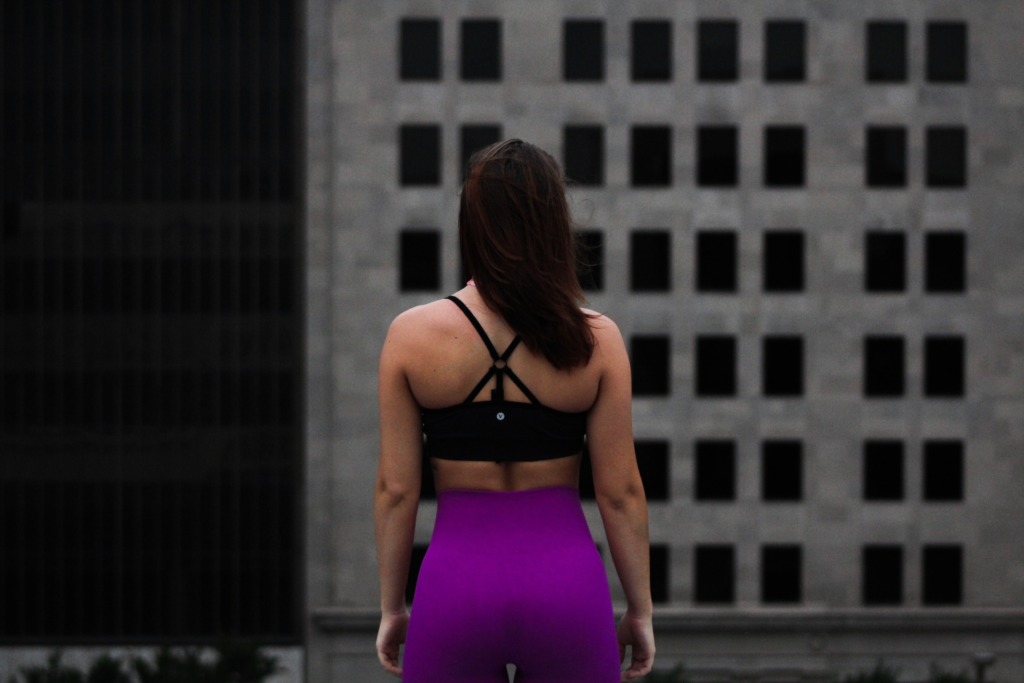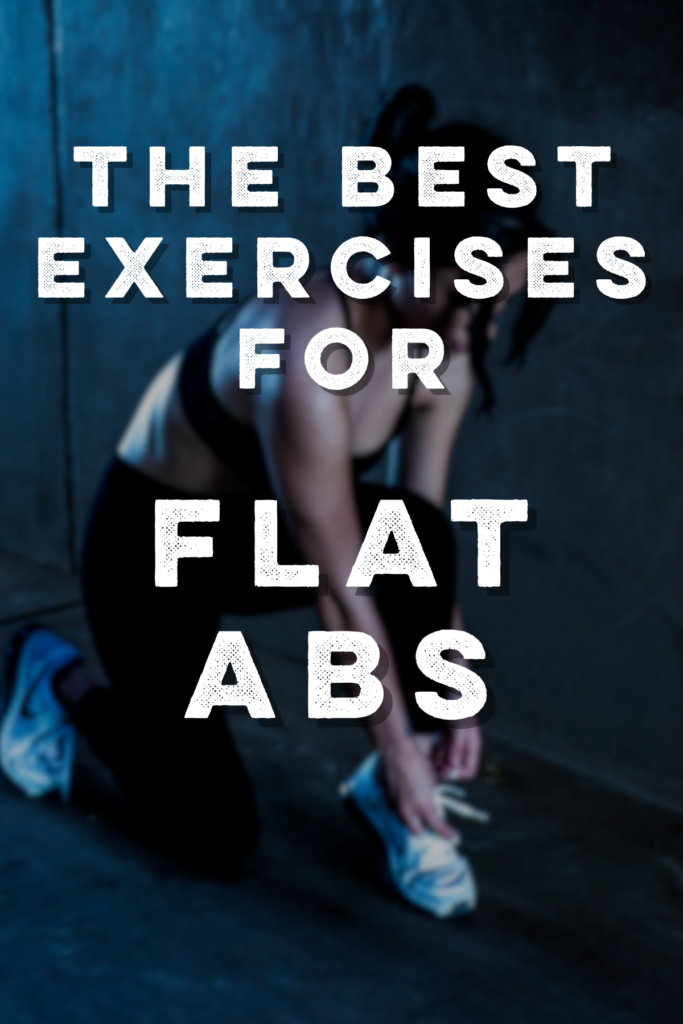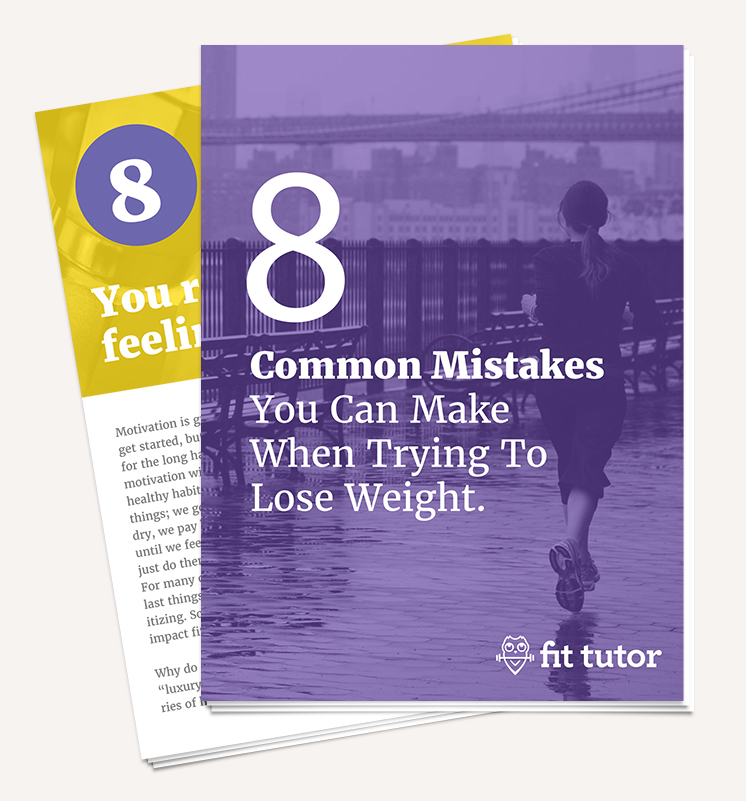If you’re looking for a more effective and more efficient way to train your core and get flat abs, look no further. “Anti-core” exercises not only do a better job of preventing injury than traditional core work (think: crunches), they help flatten your stomach and strengthen your transverse abdominis, which acts like a natural corset. Yep, you read that right. Today we’ll focus on anti-extension core exercises that work the front of your core to help make it flat, sexy, and strong!
What’s Better About Anti-Core Training?
Anti-core training trains your core to do what it was made to do – resisting certain movements to keep you upright, safe, and in good posture. Training your core muscles (think: hips all the way to shoulders) in the way that they function is much more effective than just focusing on one muscle and one movement. I’m not hating on crunches, but doing tons of crunches holding a heavy plate doesn’t translate that well into daily life. Spoilers, it also makes you stomach stick out farther.
Anti-extension exercises help strengthen your abs and core to prevent excess spinal extension. This is when your back is really arched and your stomach sticks out farther for no good reason. Anti-extension exercises promote flat abs, good posture, injury prevention, and make your daily tasks much easier!
This post is part of The Fit Tutor’s anti-core series, so check out the anti-lateral flexion article too!

9 Exercises That Will Get You Flat Abs
Let’s dive into these anti-extension core exercises that will help you look and feel amazing. Some of these may already be in your arsenal. This list will help you know what to focus on and prioritize. Combining these with the anti-lateral flexion exercises will help make sure your entire core is getting the love it needs, which translates into you being confident and healthy!
The Plank
This anti-core exercise has earned its reputation, if it’s done correctly. Line your hands (or elbows if on your forearms) underneath your shoulders. Press up into a plank while squeezing your core and glutes tightly. Pretend you’re pulling your toes and elbows towards each other to help you get the most out of it.
I demonstrate a forearm plank at the 10 second mark. You’re resisting extension by keeping your core and glutes tight and not letting your hips sag. Resist the temptation to make it easier by lifting your hips high. If you can’t hold a plank in good form, then increase your angle by trying on a bench or couch.
Extended Plank
This is my absolute favorite version of the plank! It’s just like the plank described above, but instead of lining your hands or elbows up with your shoulders, you walk them out a few inches in front. Keep walking them forward until you find an angle that’s challenging, but where you can still keep good form.
The added angle is really challenging on your core! Think about bringing your belly button up to your spine to make sure your Transverse Abdominis is engaged. This is also the end position of the Ab Wheel… so if you have an ab wheel or roller, that’s a great anti-extension exercise for flat abs, too!
Dead Bugs
All my clients know my obsession with dead bugs! You’ll start on your back, hips and knees bent to 90 degrees. Take a breath in and brace your core like someone’s about to punch you in the stomach before each rep.
The anti-extension part of this exercise occurs as you lower your opposite arm and leg toward the ground and pause. Try to pull your belly button into the floor to diminish any space between your lower back and the ground to prevent the extension of your lumbar spine. You’ll slowly lower your opposite arm and leg, bring back up to the start, and repeat on the opposite side. Too easy? Hold some light dumbbells or try the variations described here!
At the 20 second mark I demonstrate a dead bug hold. For this version, you press your hands into your thighs while keeping your core tight and lower back pressed into the ground. In this anti-extension move you’re resisting your own force as you press on your legs! Give it a try, it’s harder than it looks.
Wall Bugs
I love this challenging variation of the dead bug. In this flat abs exercise, you’ll perform a dead bug close to a wall or chair. Instead of lowering your arms like in the previous video, you’ll actively press them into the wall or chair as you alternate lowering each leg. Pulling your belly button into the ground and keeping your core flexed will help you ensure proper form!
Try to keep your knee over your hip when your leg is up. You see mine creeping towards my torso a bit. Tsk tsk.
Hollow Holds
Hollow holds will give you a wake up call about how strong your core really is! Press your lower back into the ground, brace your core, and bring your arms around and over your head while lifting your legs. The higher they are the easier it will be, so lower them to make it harder, as long as you keep pulling your belly button into your spine!
This is a tough anti-extension core move. To make it easier, keep your legs bent and arms at your sides, palms facing the ceiling. Lift up and hold.
Bird Dogs
Bird dogs are definitely a combo anti-core movement, but for our purposes I think they belong nicely with these exercises. Start with your hands directly under your shoulders, knees under hips. Take a breath in and brace your core like someone’s about to punch you in your stomach, and do this before each rep. Extend your opposite arm and leg, trying to stop when they are aligned with your torso. Pause, lower back down, and repeat on the opposite side. The goal is to keep your core tight and in a straight line, and not allow your lower back to arch as you lift.
Bird dogs will challenge your stability and improve your posture while strengthening your spinal erector muscles as well as the rest of your core.
Racked Carry
Racked carries feel like a walking plank with dumbbells! You’ll see them often done with kettlebells as well. Bring your dumbbells up in front of your chest, palms facing you. Brace your core and keep in good posture – no slouching or extending your back- while you walk.
Use a weight that’s challenging but with which you can still keep good form. Keep your wrists straight, especially if you’re using kettlebells.
Overhead Carry
For an overhead carry you’re developing not just core strength and stability, but also shoulder stability! Press your dumbbells over your head, palms facing each other. Lock your elbows and make sure your shoulder is “packed” in place. In other words, it’s not actively reaching up or out or feeling really wobbly. Brace your core and walk, not allowing yourself to bend forward or extend backward. Focus on not allowing your ribs to flare out.
Just like the racked carry, use a weight that’s challenging but that you can still keep good form. If you’ve never tried these, I’d start with a lower weight because, chances are, your shoulders aren’t as healthy as your core is strong. Keep your core braced as you breathe and step.
Straight Arm Pulldowns
Pulldowns are a great anti-extension move that also function as a combo move to strengthen your chest and back. My at-home workout friends might have a hard time with this one as I did, but if you buy a door anchor* for your exercise bands you’ll be back in business!
At the gym, you can do this on any pulldown machine. You can stand or sit, as long as you’re able to fully extend your arms, while keeping just a slight bend in your elbows. Brace your core before each rep, lean forward just slightly, and pull the bands down toward your thighs and slowly bring them back to the start.
My hips should be a little straighter and my glutes tighter. My ground is uneven and I had a hard time filming these since my current location doesn’t have a good spot for it! I think they’re a great anti-extension combo move though, and would be a great addition to your workouts!
How to Implement Anti-Extension Exercises into Your Workouts
Now that you know the key exercises to get you a flatter stomach, how do you get started? If you’re already working out, you can add these into your current programming. I’d suggest doing core and ab work three days/week, and alternate anti-lateral flexion (see this post) with the anti-extension exercises listed here, and anti-rotational movements (coming soon). You could combine these three categories each time you work your core, or focus on one each training session. Just remember, your core needs rest days, too.
I would start out by timing these exercises and figuring out how long you can go while keeping good form, and base your workout intervals around those times, progressing when you can. Starting out at 2-3 sets each around 30 seconds is a decent place to start and you can adjust from there based on your strength.
I’m psyched you’re trying these flat abs exercises! Efficiency and effectiveness are my love languages, so these will help you maximize however much time you have to workout! I’d love to know your favorites or if you have any questions!
*pssst that amazon link is an affiliate – I make a little money at zero extra charge to you! I also have a store if you need any exercise bands, clean protein powder, dumbbells, etc!
**Try at your own risk! Of course, check with your doctor before starting any exercise program- especially if you have a medical condition, injury, or are pregnant. If you have blood pressure issues, don’t get above an 8 on the RPE scale. The Fit Tutor is not responsible for any injuries.



Comments are closed.